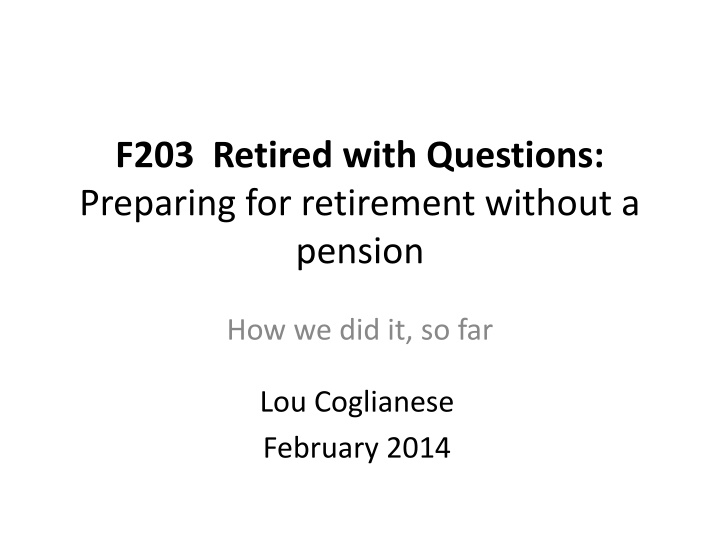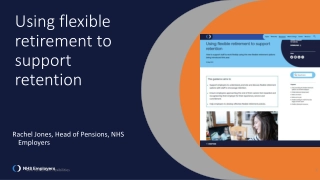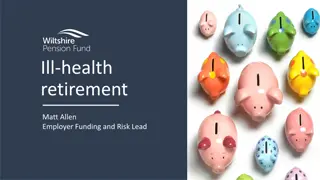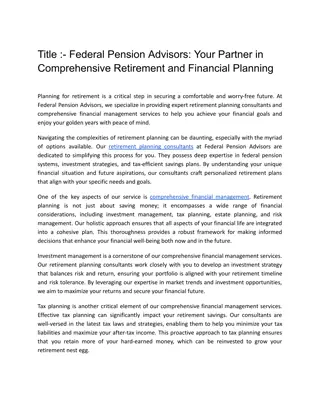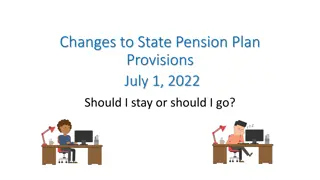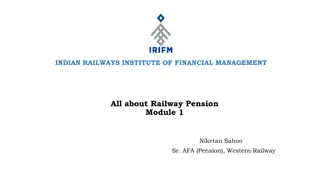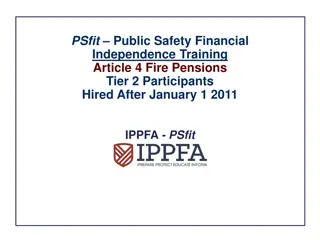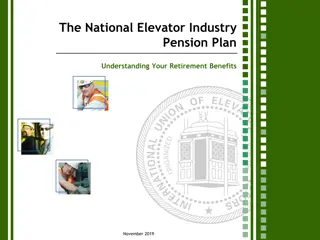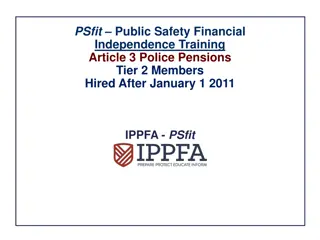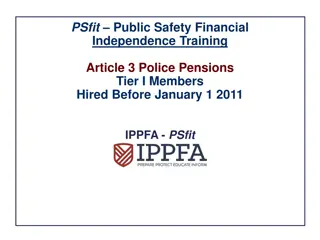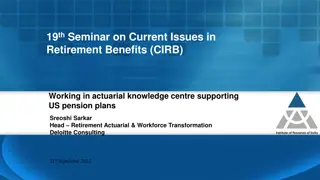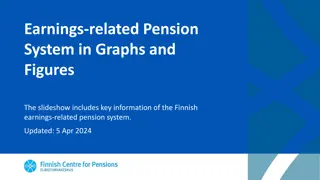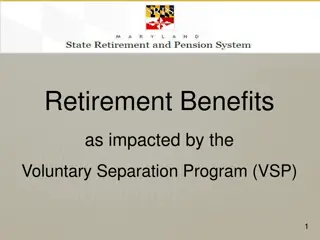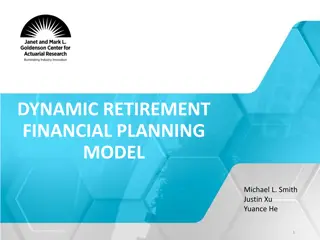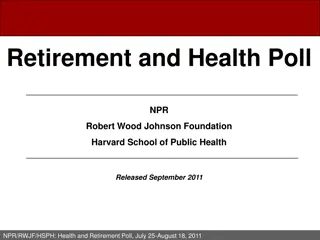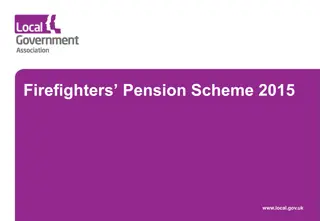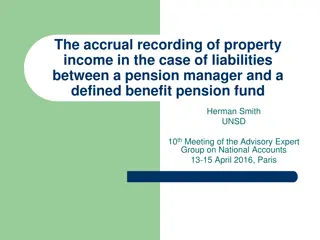Preparing for Retirement Without Pension: Our Journey So Far
Lou Coglianese shares insights on preparing for retirement without a pension, discussing topics like creating a plan, budgeting, income sources, and managing finances effectively. The process involves setting goals, developing tactics, creating budgets, and generating income streams to ensure financial stability in retirement.
Download Presentation

Please find below an Image/Link to download the presentation.
The content on the website is provided AS IS for your information and personal use only. It may not be sold, licensed, or shared on other websites without obtaining consent from the author.If you encounter any issues during the download, it is possible that the publisher has removed the file from their server.
You are allowed to download the files provided on this website for personal or commercial use, subject to the condition that they are used lawfully. All files are the property of their respective owners.
The content on the website is provided AS IS for your information and personal use only. It may not be sold, licensed, or shared on other websites without obtaining consent from the author.
E N D
Presentation Transcript
F203 Retired with Questions: Preparing for retirement without a pension How we did it, so far Lou Coglianese February 2014
Topics Creating the Plan What will life be like, how do we fund it Budgeting Not a bad word Income Sources and stability Evaluating the plan What makes us believe we ll come out all right Managing the plan What, When and How to track things
Creating the Plan Looking at the very topics that came up in this group at the first session Where do we want live? How do we want to live? How will that change over time? How will age affect what we want to do vs. what we d be able to do When will we need to go to independent/assisted living Can we afford it? What income do we have? What income can we generate? Do we have the assets to last? How much do we plan to leave to others?
Creating the plan 1. We started with a simple list Goals: Activities, health, social, intellectual, community, family, . Tactics: For each of the goals above, general descriptions of how to achieve the goal, e.g., Travel to visit family members regularly Implementations: Specific actions to be taken 2. Fleshed it out with some templates from OLLI courses Investment goals, family documentation, and others 3. Asked financial advisors if their companies had a planning template Settled on: Fidelity s Wealth Planning Overview at https://www.fidelity.com/wealth-management/wealth-planning or at https://www.fidelity.com/bin- public/060_www_fidelity_com/documents/Generic_WPOFIN.pdf
Creating the Budget The key idea How could we tell if our money would last if we didn t know how much we spend We created a simple budget structure (in Quicken) Essential expenses (food, housing, health, etc) Discretionary expenses (hobbies, travel, et) We used history as a guide to estimate future spend Looking at checking account and credit card statements. How much did we spend on various items while we were still working? How much did we spend on those items over the last few years? What about spending that wasn t recorded (mostly ATM withdrawals) How much do we expect to spend in retirement? How much more will we spend? (fun, health, etc.) What will be less? Will things change in our 70s? Our 80s? When will we plan to be in Independent or Assisted Living? Will we downsize our house before Independent/Assisted Living? To check things made sense, we compared actual spend to the budget for a few years
Income Generating the paycheck The key is to be comfortable with the plan For us it s variation of the bucket plan Needs 60s: Get most cash flow from investments. 70s: Harvest regular cash flows along with investments Regular flows include a small pension, annuities and SSA 80s+: Deal with inflation eroding pension and annuities. Also manage changes in expenses. Plan for the portfolio Make sure there is very safe portion for cash flows until 70 Make sure the rest of the portfolio is structured for long term growth Be prepared to spend down the entire portfolio after age 85
Evaluating the financial plan What make us believe we ll come out all right Experience with tracking our spending Rules of thumb (3-4% rule) Evaluations by multiple sources Experience of acquaintances Simple straight line analysis Portfolio return vs. inflation Monte Carlo Simulations Various sites I heard about through OLLI Fidelity Retirement Income Planner
Simulation Example Fidelity s Retirement Income Planner (complicated version) Inputs What it does Runs 250 simulations of market returns against my portfolio Calculates RMDs needed Simulates yearly withdrawals from accounts in a tax appropriate way Estimates taxes on assets and withdrawals (poorly) Escalates expenses by inflation (with healthcare much more than everything else) Throws away the worst 25 results (10% of the simulations External Income and sources With changes over time Including one time incomes Investment Assets All assets in all accounts Expenses By category and subcategory Varied over time Including infrequent large expenses (eg, a car) How long we each expect to live Outputs Assets remaining at end or shortfall Year by year expenses, taxes, income, RMDs and asset balance Some risk warnings Risks Are the simulations reasonable approximation of the future? Will my assets behave like the market averages Are my estimates of future spend close What if s The input values were different Inflation were higher We changed our asset allocation mix We sell our house
Managing the plan Monthly Track this year s spend vs budget Discuss changes in spend for this year Check up on action items What if , Don t know about , Maybe we should look at Quarterly Track investments and income Track actions we are taking against goals Track risks and what we are doing about them Track Assets vs. Plan Semi-Annually Rebalance investment portfolio Yearly Reward ourselves for the work we do Review goals, strategies and tactics and adjust them Update the budget
